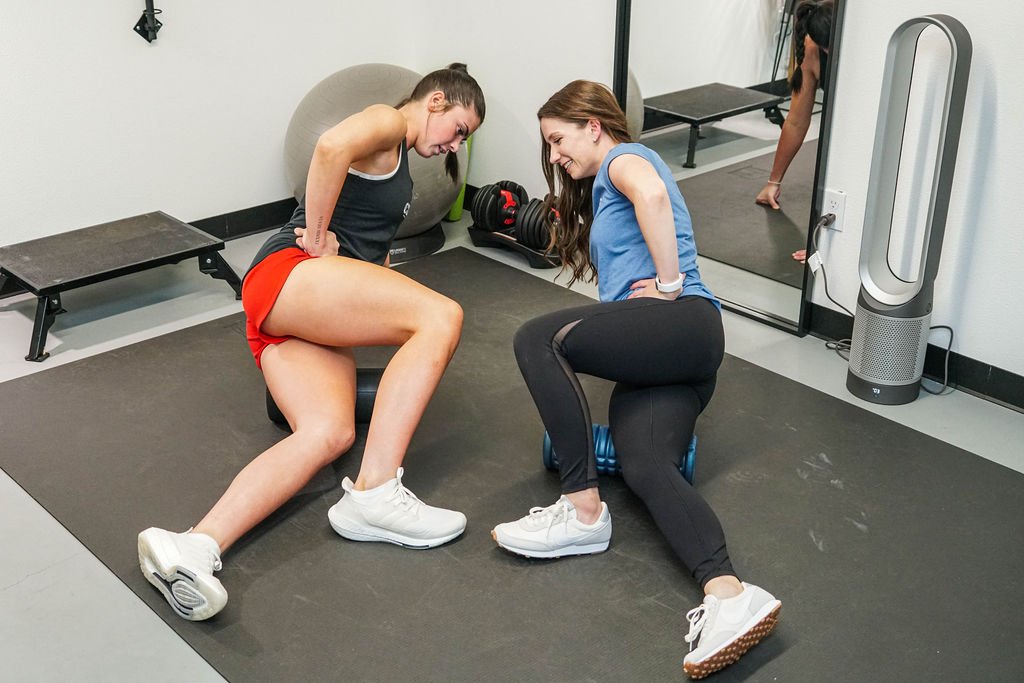In the pursuit of fitness, many individuals focus primarily on workouts and nutrition, often neglecting the equally important aspects of recovery and self-care. Without adequate recovery, your body cannot repair and strengthen, leading to diminished performance, increased risk of injury, and potential burnout. This article provides essential strategies for effective recovery and self-care practices that promote sustainable growth, allowing you to enhance your performance and maintain a balanced fitness routine.
By understanding the importance of recovery, exploring active recovery techniques, and implementing proper nutrition and mindfulness practices, you can optimize your fitness journey. These insights will help you create a comprehensive approach to health that supports both physical and mental well-being, ensuring you achieve your goals more effectively.
“`html
In this article you will find:
Mindset Mastery for Lasting Fitness Success
Achieving fitness success is as much a mental challenge as it is a physical one. The foundation of any effective fitness journey lies in mastering your mindset. This section will explore how cultivating a positive and growth-oriented mindset can significantly impact your ability to reach your fitness goals and maintain long-term success.
Understanding the Power of Mindset
Your mindset influences your actions, choices, and ultimately, your results. A growth mindset—the belief that your abilities and intelligence can be developed through dedication and hard work—can transform your fitness journey. This perspective encourages you to embrace challenges, persist through setbacks, and view failures as opportunities to learn and improve.
Setting Clear and Achievable Goals
To harness the power of your mindset, start by setting clear and achievable fitness goals. Goals provide direction and motivation, and they should be:
- Specific: Clearly define what you want to achieve.
- Measurable: Establish criteria to track your progress.
- Attainable: Set realistic goals that challenge you but are also achievable.
- Relevant: Ensure your goals align with your overall fitness aspirations.
- Time-bound: Set deadlines to create a sense of urgency.
For example, instead of saying “I want to get fit,” a SMART goal would be “I will run a 5K in under 30 minutes within the next three months.” This clarity will help you stay focused and motivated.
Building Resilience Through Challenges
Every fitness journey will encounter obstacles, whether it’s an injury, a plateau, or a lack of motivation. Resilience is the ability to bounce back from these setbacks. Cultivating a resilient mindset means viewing challenges as opportunities to grow rather than as roadblocks. Here are some strategies to build resilience:
- Practice Positive Self-Talk: Replace negative thoughts with affirmations that reinforce your ability to overcome challenges.
- Visualize Success: Spend time imagining yourself achieving your fitness goals, which can enhance your motivation and confidence.
- Learn from Setbacks: Reflect on what went wrong and how you can improve, rather than dwelling on the failure itself.
Embracing a Supportive Community
Surrounding yourself with a supportive community can significantly enhance your mindset. Whether it’s friends, family, or a fitness group, having people who encourage and inspire you can make a world of difference. Seek out communities that share your goals and values, and don’t hesitate to lean on them during tough times. Engaging with others can provide accountability and motivation, making your fitness journey more enjoyable and less isolating.
Implementing Mindfulness and Mental Training
Incorporating mindfulness practices into your routine can help you stay present and focused. Techniques such as meditation, deep breathing, and journaling can enhance your mental clarity and emotional resilience. These practices enable you to manage stress effectively and maintain a positive outlook, which is crucial for long-term fitness success.
For further reading on how mindfulness can enhance your fitness journey, consider exploring resources from the Mindful organization, which offers various techniques and insights into mindfulness practices.
By mastering your mindset, you set the stage for lasting fitness success. As you move forward in your journey, remember that the mental aspects are just as vital as the physical ones. A strong, resilient mindset can empower you to overcome obstacles and achieve your goals, paving the way for a healthier, happier life.
Essential Nutrition Strategies for Optimal Performance
Nutrition plays a pivotal role in enhancing athletic performance and overall fitness. The right dietary choices can fuel your workouts, aid recovery, and promote overall well-being. In this section, we will explore essential nutrition strategies that can help you optimize your performance and achieve your fitness goals.
Understanding Macronutrients
The foundation of any effective nutrition strategy lies in understanding macronutrients: carbohydrates, proteins, and fats. Each macronutrient plays a crucial role in your body’s performance and should be balanced according to your fitness goals:
- Carbohydrates: These are your body’s primary source of energy, especially during high-intensity workouts. Focus on complex carbohydrates such as whole grains, fruits, and vegetables to provide sustained energy.
- Proteins: Essential for muscle repair and growth, proteins should be included in every meal. Opt for lean sources like chicken, fish, legumes, and plant-based proteins to support recovery and muscle synthesis.
- Fats: Healthy fats are important for hormone production and overall health. Include sources such as avocados, nuts, seeds, and olive oil, while avoiding trans fats and excessive saturated fats.
Timing Your Nutrient Intake
When you eat can be just as important as what you eat. Nutrient timing refers to consuming specific nutrients at strategic times to maximize performance and recovery:
- Pre-Workout Nutrition: Fuel your body with a balanced meal containing carbohydrates and protein 1-2 hours before exercising. This can help sustain your energy levels and enhance performance.
- Post-Workout Nutrition: After your workout, consume a meal rich in protein and carbohydrates within 30-60 minutes to promote muscle recovery and replenish glycogen stores. A smoothie with protein powder and a banana is a quick and effective option.
Hydration: The Unsung Hero
Staying hydrated is crucial for optimal performance. Dehydration can lead to fatigue, decreased coordination, and impaired performance. Here are some hydration strategies:
- Drink Water Regularly: Aim to drink at least half your body weight in ounces of water daily, adjusting for activity level and climate.
- Electrolyte Balance: During intense workouts or long sessions, consider electrolyte drinks to replenish lost minerals such as sodium, potassium, and magnesium.
For more detailed information on hydration and performance, check out the resources provided by the Gatorade Sports Science Institute.
Incorporating Variety for Nutritional Balance
A diverse diet ensures that you receive a wide range of nutrients essential for performance and recovery. Include various food groups in your meals, focusing on:
- Colorful Fruits and Vegetables: These are rich in vitamins, minerals, and antioxidants that help combat inflammation and support overall health.
- Whole Foods: Prioritize whole, minimally processed foods to maximize nutrient intake and avoid added sugars and unhealthy fats.
Listening to Your Body
Finally, one of the most effective nutrition strategies is to listen to your body. Pay attention to how different foods affect your energy levels, performance, and recovery. Keep a food journal to track your meals and how you feel during workouts. This can help you identify patterns and make informed dietary choices that best support your fitness journey.
By implementing these essential nutrition strategies, you can optimize your performance and set yourself up for long-term success. Remember that nutrition is a personal journey, and finding what works best for you will take time and experimentation.
Innovative Workout Techniques to Maximize Results
In the ever-evolving world of fitness, staying updated with the latest workout techniques is essential for maximizing results and keeping your routine fresh. Innovative workouts not only challenge your body in new ways but also prevent plateaus and enhance motivation. This section delves into some cutting-edge workout techniques that can help you achieve your fitness goals more effectively.
Circuit Training for Efficiency
Circuit training involves performing a series of exercises in succession with minimal rest in between. This technique is efficient for burning calories and building strength simultaneously. Here’s how to implement it:
- Select Exercises: Choose 5-10 exercises that target different muscle groups, such as squats, push-ups, lunges, and planks.
- Set Time Intervals: Perform each exercise for 30-60 seconds, followed by a 15-30 second rest before moving to the next exercise.
- Repeat Rounds: Aim for 2-4 rounds of the circuit, depending on your fitness level.
Circuit training is not only time-efficient but also enhances cardiovascular fitness while promoting muscular endurance.
High-Intensity Interval Training (HIIT)
HIIT has gained popularity for its effectiveness in burning fat and improving cardiovascular health in a shorter amount of time. This technique alternates between short bursts of intense exercise and brief recovery periods. Here’s how to incorporate HIIT into your routine:
- Choose Your Exercises: Select high-intensity exercises like sprinting, burpees, or jump squats.
- Determine Your Intervals: A common approach is 20 seconds of maximum effort followed by 10 seconds of rest, repeated for 4-8 rounds.
- Cool Down: Always include a cooldown period with stretching to prevent injury.
HIIT can be tailored to any fitness level and can be performed with little to no equipment, making it accessible and versatile.
Functional Training for Real-World Strength
Functional training focuses on exercises that mimic everyday activities, enhancing strength, balance, and coordination. This approach not only improves performance in sports but also aids in daily tasks. To implement functional training:
- Incorporate Compound Movements: Exercises like deadlifts, kettlebell swings, and medicine ball throws engage multiple muscle groups and improve overall functionality.
- Use Unstable Surfaces: Training on unstable surfaces like BOSU balls or balance boards can enhance core stability and strength.
- Focus on Mobility: Include dynamic stretches and mobility drills to improve flexibility and prevent injury.
Functional training is especially beneficial for older adults and those recovering from injuries, as it promotes strength in movements used in daily life.
Incorporating Technology and Apps
Technology has revolutionized fitness, providing innovative ways to enhance workouts. Consider these tools to maximize your results:
- Fitness Apps: Use apps like MyFitnessPal or Strava to track your workouts, monitor progress, and set goals.
- Wearable Devices: Smartwatches and fitness trackers can provide real-time feedback on heart rate, calories burned, and activity levels.
- Online Training Programs: Access professional training programs and virtual classes that offer guidance and motivation from certified trainers.
Leveraging technology can help you stay accountable and motivated, allowing for personalized adjustments to your workout regimen.
Mobility and Recovery Workouts
Innovative workouts are not just about intensity; incorporating mobility and recovery techniques into your routine can enhance performance and prevent injury. Techniques to consider include:
- Foam Rolling: Use a foam roller post-workout to release muscle tension and improve blood flow.
- Yoga and Stretching: Integrate yoga sessions or targeted stretching routines to enhance flexibility and promote relaxation.
- Active Recovery: Engage in light activities such as walking, swimming, or cycling on rest days to aid recovery without overexertion.
Prioritizing mobility and recovery is essential for maintaining a balanced fitness routine and achieving long-term results.
By implementing these innovative workout techniques, you can maximize your fitness results, keep your routine engaging, and continuously challenge your body. As you explore these methods, remember that consistency and adaptability are key to your success on your fitness journey.
Recovery and Self-Care Practices for Sustainable Growth
In the pursuit of fitness and health, recovery and self-care practices are often overlooked. However, they are essential for sustainable growth, allowing your body and mind to recuperate, adapt, and improve. This section will explore various recovery and self-care techniques that can enhance your performance and promote overall well-being.
The Importance of Recovery
Recovery is not just about taking a break; it’s a critical component of any training program. When you exercise, you create micro-tears in your muscles, and recovery allows these muscles to repair and grow stronger. Here’s why recovery is vital:
- Prevents Injury: Adequate recovery reduces the risk of overuse injuries and muscle fatigue, enabling you to maintain a consistent workout routine.
- Enhances Performance: Proper recovery can lead to improved strength, endurance, and overall athletic performance.
- Supports Mental Health: Recovery time allows your mind to rest, reducing stress and anxiety associated with intense training.
Active Recovery Techniques
Active recovery involves low-intensity exercise that promotes blood flow and muscle recovery without putting additional strain on your body. Here are some effective active recovery techniques:
- Light Aerobic Exercise: Activities such as walking, cycling, or swimming at a low intensity can help clear lactic acid from your muscles and speed up recovery.
- Yoga and Stretching: Incorporating yoga sessions or gentle stretching can improve flexibility, reduce muscle tension, and enhance relaxation.
- Foam Rolling: Using a foam roller helps release muscle tightness and improve circulation, aiding in muscle recovery.
Nutrition for Recovery
Your diet plays a significant role in recovery. Consuming the right nutrients post-workout can optimize muscle repair and replenishment. Consider these nutritional strategies:
- Protein Intake: Aim for a protein-rich snack or meal within 30 minutes post-exercise to support muscle repair. Good sources include protein shakes, Greek yogurt, or lean meats.
- Carbohydrates: Replenishing glycogen stores is essential, especially after intense workouts. Include complex carbohydrates like sweet potatoes, quinoa, or whole grains in your meals.
- Hydration: Rehydrate with water or electrolyte drinks to replace fluids lost during exercise.
For a deeper understanding of nutrition for recovery, explore resources from the Academy of Nutrition and Dietetics.
Prioritizing Sleep
Sleep is a crucial yet often neglected aspect of recovery. Quality sleep allows your body to repair itself and recover from the stresses of training. Here are some tips to enhance your sleep quality:
- Establish a Routine: Go to bed and wake up at the same time each day to regulate your body’s internal clock.
- Create a Relaxing Environment: Ensure your bedroom is conducive to sleep by keeping it dark, cool, and quiet.
- Limit Screen Time: Avoid screens for at least an hour before bedtime to promote better sleep quality.
Mindfulness and Stress Management
Incorporating mindfulness practices into your recovery routine can significantly enhance your overall well-being. Stress management is essential for recovery, as high stress can hinder muscle repair and growth. Here are some effective practices:
- Meditation: Regular meditation can reduce stress and improve focus, aiding in your recovery process.
- Deep Breathing Exercises: Engaging in deep breathing can help lower cortisol levels, promoting relaxation and recovery.
- Journaling: Reflecting on your workouts and recovery can provide insights into your progress and help set goals, enhancing motivation.
Listening to Your Body
One of the most crucial aspects of recovery and self-care is listening to your body. Pay attention to signs of fatigue, soreness, or discomfort. Here’s how to tune in:
- Track Your Workouts: Maintain a workout journal to monitor your training intensity and recovery periods.
- Rest When Needed: If you feel overly fatigued or sore, consider taking a rest day or engaging in lighter activities.
- Seek Professional Guidance: If you’re unsure about your recovery needs, consider consulting a fitness professional or physical therapist.
By incorporating these recovery and self-care practices into your routine, you can promote sustainable growth, enhance performance, and maintain a healthy balance in your fitness journey.
“`
Incorporating a resilient mindset, proper nutrition, innovative workout techniques, and effective recovery practices is crucial for achieving sustainable fitness growth. Embrace challenges as opportunities for growth by practicing positive self-talk, visualizing success, and learning from setbacks. Surround yourself with a supportive community and implement mindfulness techniques to enhance mental clarity and motivation.
Nutrition plays a vital role in optimizing performance; focus on balanced macronutrients, proper nutrient timing, and hydration. Utilize active recovery methods, prioritize sleep, and manage stress through mindfulness practices to promote recovery. Listening to your body and adjusting your routine accordingly will help you maintain a healthy balance and continuously progress on your fitness journey.




